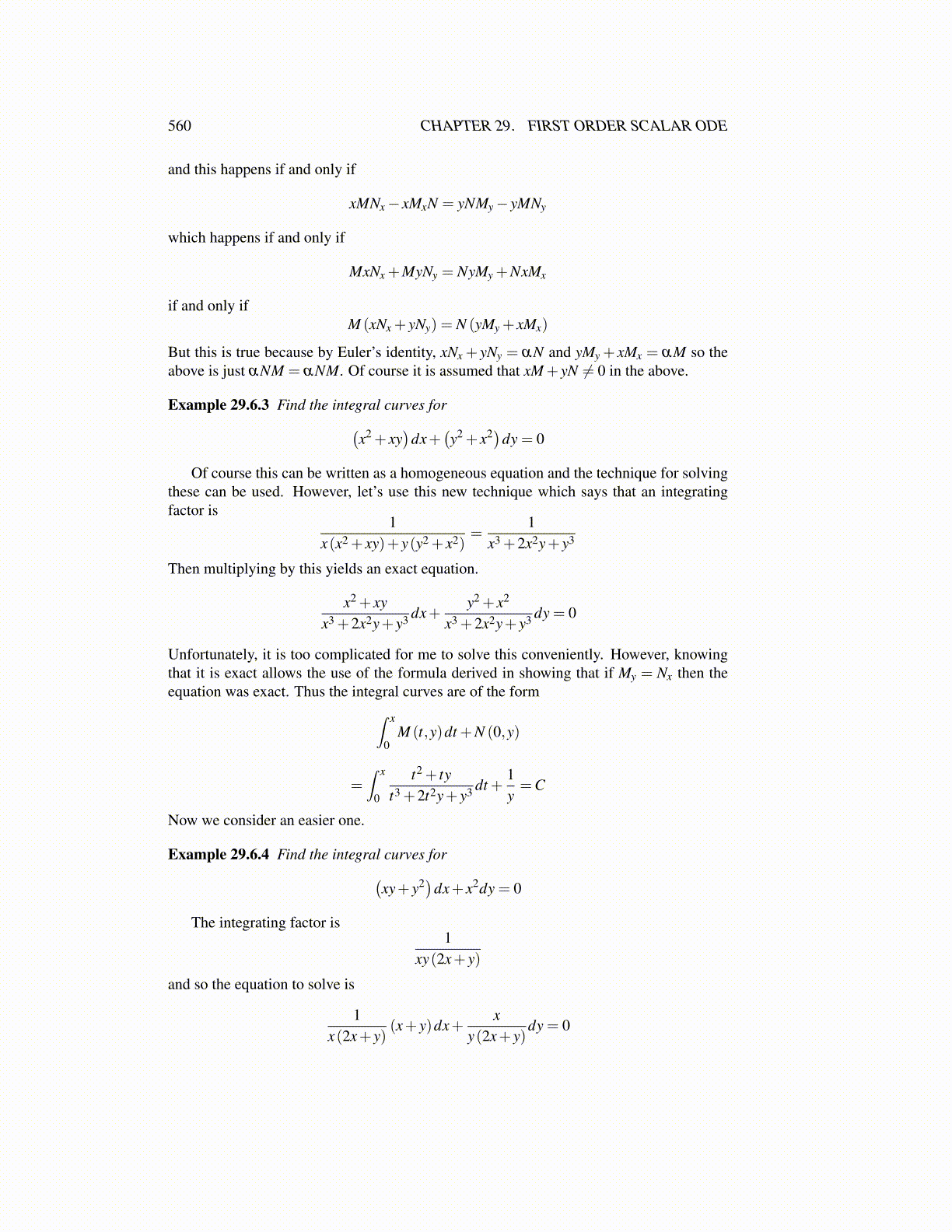
560 CHAPTER 29. FIRST ORDER SCALAR ODE
and this happens if and only if
xMNx− xMxN = yNMy− yMNy
which happens if and only if
MxNx +MyNy = NyMy +NxMx
if and only ifM (xNx + yNy) = N (yMy + xMx)
But this is true because by Euler’s identity, xNx + yNy = αN and yMy + xMx = αM so theabove is just αNM = αNM. Of course it is assumed that xM+ yN ̸= 0 in the above.
Example 29.6.3 Find the integral curves for(x2 + xy
)dx+
(y2 + x2)dy = 0
Of course this can be written as a homogeneous equation and the technique for solvingthese can be used. However, let’s use this new technique which says that an integratingfactor is
1x(x2 + xy)+ y(y2 + x2)
=1
x3 +2x2y+ y3
Then multiplying by this yields an exact equation.
x2 + xyx3 +2x2y+ y3 dx+
y2 + x2
x3 +2x2y+ y3 dy = 0
Unfortunately, it is too complicated for me to solve this conveniently. However, knowingthat it is exact allows the use of the formula derived in showing that if My = Nx then theequation was exact. Thus the integral curves are of the form∫ x
0M (t,y)dt +N (0,y)
=∫ x
0
t2 + tyt3 +2t2y+ y3 dt +
1y=C
Now we consider an easier one.
Example 29.6.4 Find the integral curves for(xy+ y2)dx+ x2dy = 0
The integrating factor is1
xy(2x+ y)
and so the equation to solve is
1x(2x+ y)
(x+ y)dx+x
y(2x+ y)dy = 0